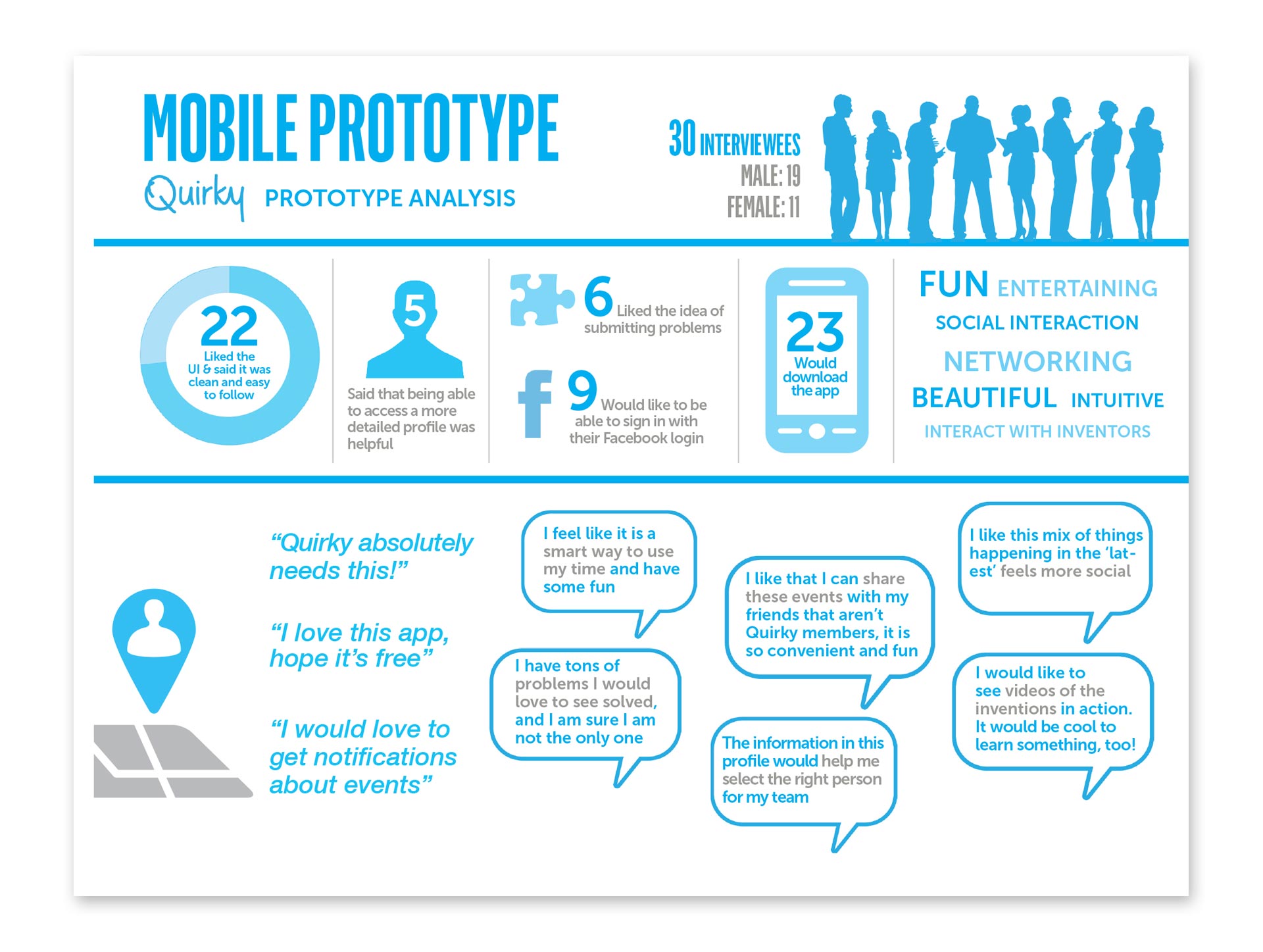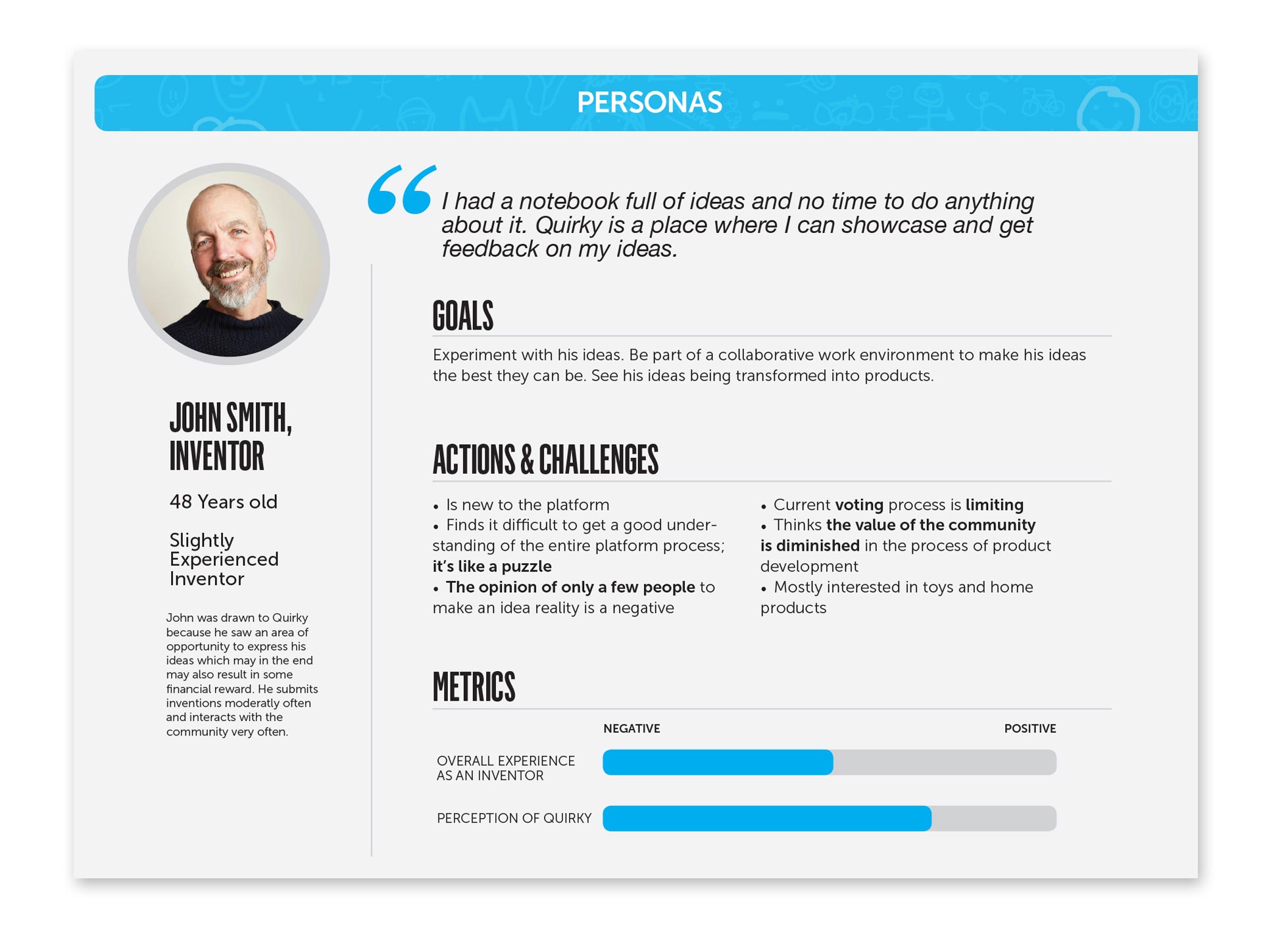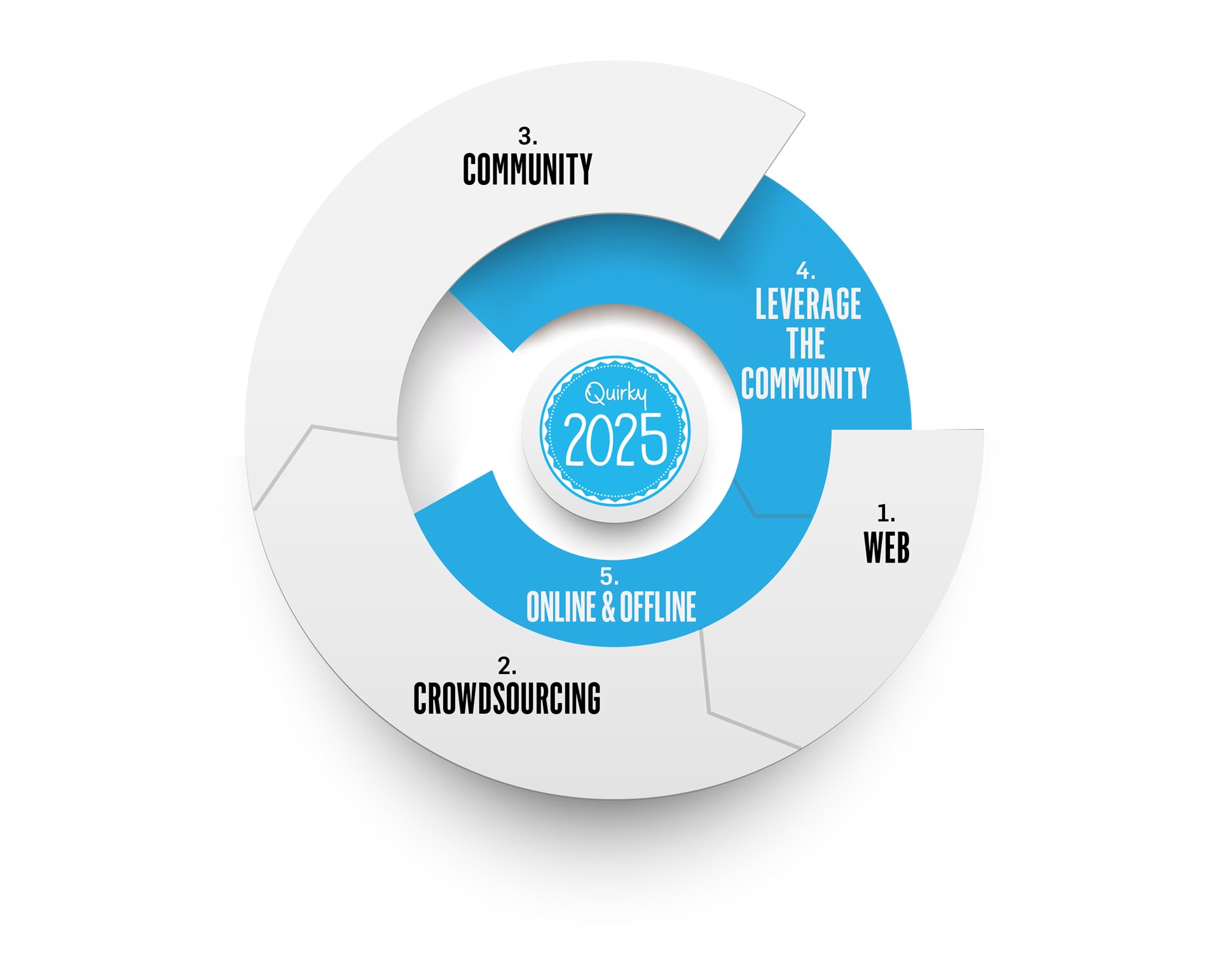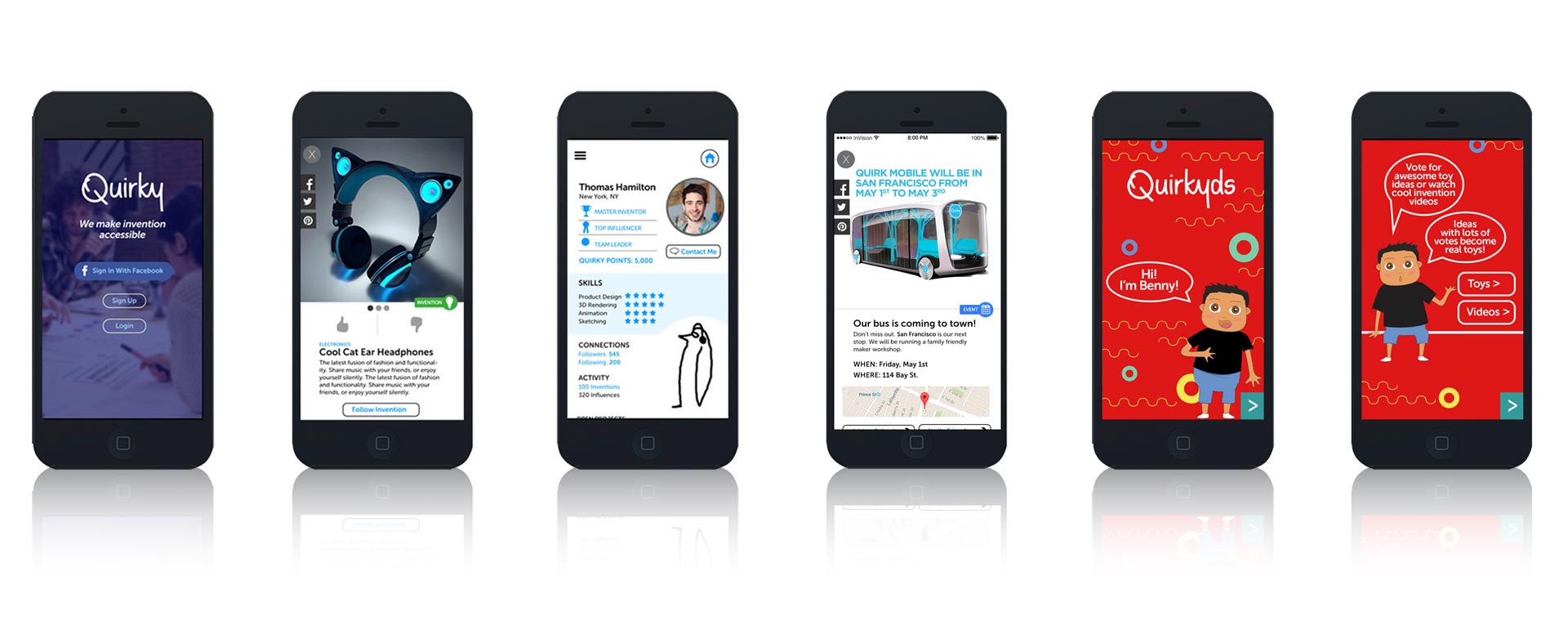Quirky
Client:
Quirky
Skills:
Design thinking
Visual design
UX / UI
Quirky is a crowdsourcing invention platform that enables anyone to turn their ideas into successful products.
The problem
Quirky was facing challenges and limitations that come with trying to develop products in an unlimited number of categories.
The solution
Using the solomo strategy (social, mobile, local) I designed an app that connects influencers, inventors and just regular community members. Through the app, Quirky members are able to chat, invent, influence, search for events, submit ideas and problems and rate other members. Having an on-the-go application allows for Quirky to really become part of their members every day life.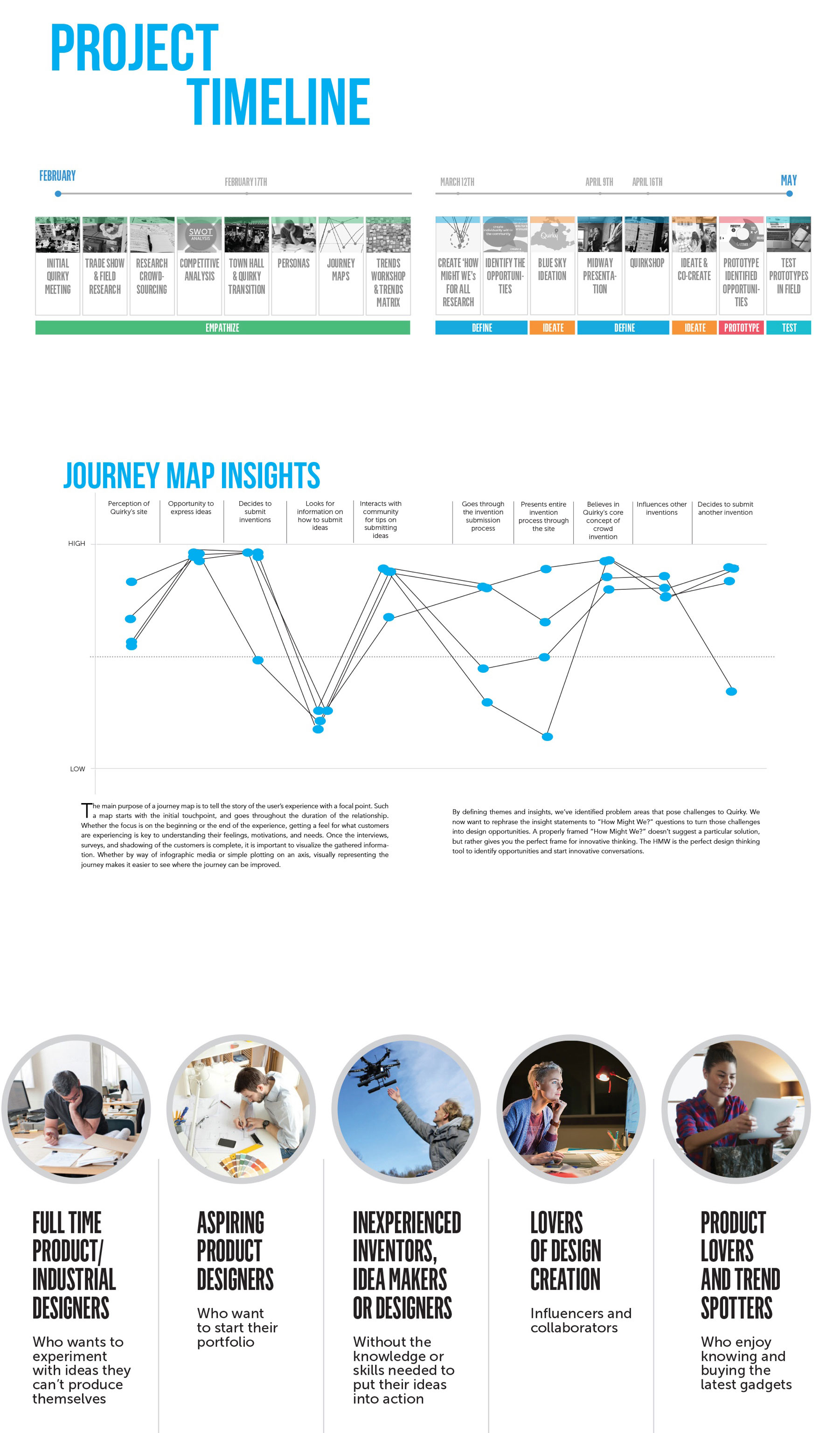
“We need to communicate with the newcomers, the inventors, the influencers and the power users, and that’s a big struggle.”
The process
To address the problem above, I first took a look at the industry as a whole. I started by identifying Quirky's competition, by looking at their strengths I found out what some of the best practices across the industry were. I used these findings as a lens through which I analyzed Quirky’s strengths and weaknesses.
It was imperative to understand the Quirky user experience. Several weeks of research went into conducting surveys, personal and employee interviews as well as case study comparisons. By understanding the fundamental drive behind the community members and users, not only was I able to identify their successes, but also their pain points.
After careful observation from my interviews, surveys, and examining the current platforms such as the Quirky website and app, I identified many strengths and weaknesses. I was ready for the design ideation phase.
I started ideation with a series of workshops including Blue Sky Ideation and feature brainstorming sessions. From these sessions I created affinity maps to identify insight patterns and from these patterns came the questions I needed to ask to find out how Quirky can better position themselves for the future. These were the questions I aimed to get answers for and that led me to the design solution: How might we better engage the community? How might we support knowledge exchange? How might we entice skilled inventors?
Design thinking tools:
